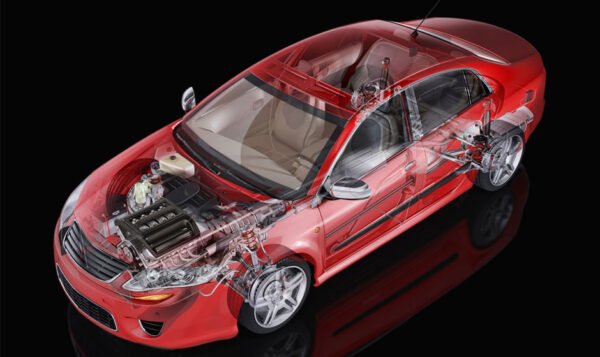The Smart Consumer’s Guide to Purchasing a New Car

Key Takeaways
- Before purchasing, you must comprehend your requirements and financial plan.
- Researching various car models and their features can help you make an informed decision.
- Test driving multiple vehicles can give you a practical sense of what’s best for you.
- Smartly negotiating can save you money in the long run.
Define Your Needs and Budget
One of the first steps in purchasing a new car is clearly defining your needs and budget. Ask yourself questions such as: What will you use this car for? How many passengers will you typically carry? Do you need additional cargo space for groceries or sports equipment? Setting a budget can help narrow your options and keep you financially comfortable. Awareness of the various financing options available can also play a significant role in determining your budget. Visiting dealerships for a Lakeland Jeep in Florida can give you a better idea of pricing and financing options. Understanding your budget is crucial to avoid overspending. When setting your budget, ensure you factor in the purchase price, insurance, registration, and maintenance costs. By accounting for all these factors, you’ll avoid surprise expenses and make a more sustainable financial decision.
Check Safety Ratings and Features
Consider frontal, side-impact tests, and rollover ratings when checking safety ratings. It’s also wise to look into any recalls or safety issues reported for the models you’re considering. Investing in new Dodge trucks for sale with top safety ratings and features protects you and your loved ones and can reduce insurance premiums.
Research Car Models and Features
Once you have your needs and budget, research different car models that fit your criteria. Look for reviews, ratings, and features that stand out to you. Websites provide comprehensive reviews on various makes and models, helping you make an informed decision. When comparing models, consider fuel efficiency, cargo space, and technology features. Look into each model’s long-term reliability and ownership costs. Understanding warranty coverage and the availability of replacement parts can save you time and money. Don’t just focus on the latest models; sometimes, last year’s models can offer excellent value with similar features at a reduced price.
Consider Fuel Efficiency and Environmental Impact
Fuel efficiency is an increasingly important factor for many buyers. Not only does it save money on gas, but it also reduces your environmental footprint. Modern cars, including hybrids and electric vehicles, offer various options to maximize fuel economy. Evaluating the mileage ratings and emission standards of different vehicles can help you make an eco-friendly choice. Exploring fully electric or plug-in hybrid vehicles may benefit individuals dedicated to minimizing their carbon footprint.
Moreover, fuel efficiency isn’t just about gas mileage. Consider all car costs, including maintenance and potential financial benefits for environmentally friendly or electric vehicles. Some states offer rebates or tax credits for purchasing environmentally friendly vehicles, which can offset the higher initial cost. Also, if you are opting for an electric car, think about the availability of charging stations.
Take Test Drives
Always remember the value of a test drive. It allows you to experience the car first-hand and evaluate comfort, handling, and overall performance. Test drive multiple models for comparison. Please pay attention to seat comfort, ease of control, visibility, and how it feels to drive in various conditions. Test drives also allow you to see how the car’s features work in real time. You can try out the infotainment system, adjust the seats, and test the car’s connectivity features. Drive the car on different types of roads to get a complete picture of its capabilities. Bringing along family members or friends who frequently ride with you can provide additional perspectives on comfort and convenience.
Compare Prices and Negotiate
Once you have chosen a car, compare prices from various dealerships. Negotiation can often shave significant amounts off the sticker price. Being informed about current market prices puts you in a stronger position to negotiate. Don’t hesitate to ask for discounts, incentives, or optional extras to be included at no additional cost. Equip yourself with dealer incentives and nationwide sales trends to strengthen your negotiating position. Preparation is critical when negotiating. Have a clear idea of what you’re willing to spend and stick to it. Be prepared to walk away if the dealer can’t meet your price.
Check for Incentives and Financing Options
Look out for manufacturer incentives, rebates, and special financing offers. These can reduce the overall cost of the car. Additionally, explore different financing options and choose one that makes the most financial sense for you. Always read the fine print on financing offers to understand the actual cost over the loan term. Some buyers may qualify for zero percent financing or cash-back offers, especially during sales events or end-of-year clearance sales. You can get pre-approved for a loan from a bank or credit union before going to the dealership. It can set a benchmark rate that you can use to compare with dealer financing offers. Also, remember to check the terms and conditions for early repayment or refinancing options. A reduced interest rate can help you keep thousands of dollars during the loan’s lifetime.
Prepare for Additional Costs
Take into account extra expenses like registration fees, insurance, and maintenance. Budgeting for these can prevent unexpected financial strain down the line. Extended warranties or maintenance packages might be worthwhile investments depending on the model and your expected vehicle use. Calculate the total cost of ownership, including the projected depreciation, to get a complete picture of what your new car will cost over time. Knowing these costs beforehand can help you budget more effectively and avoid financial surprises. Research insurance rates for different models before purchasing to ensure the car you choose fits within your insurance budget. Setting aside a maintenance fund for regular upkeep and unexpected repairs is also beneficial. Advanced planning in these areas can lead to a smoother ownership experience.



